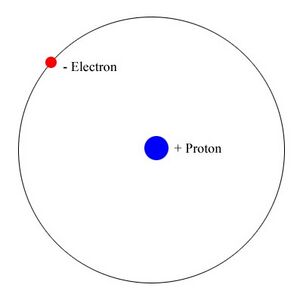User talk:KimberlyWynne: Difference between revisions
(Astrophysics Homework) |
|||
| Line 39: | Line 39: | ||
a biological cell, a cluster of galaxies, the Earth, a galaxy, the Local Group of galaxies, a neutron, a neutron star, a person, the Solar System, our sun. Note: you may have to look in other books besides your textbook to get all this information. | a biological cell, a cluster of galaxies, the Earth, a galaxy, the Local Group of galaxies, a neutron, a neutron star, a person, the Solar System, our sun. Note: you may have to look in other books besides your textbook to get all this information. | ||
# Neutron = <math>3 quarks \; </math> (or <math>r \approx 1 fm = 10^{-25} m \;</math> <ref>Which is larger, the proton or the neutron? http://www.physlink.com/education/AskExperts/ae570.cfm</ref> | # Neutron = <math>3 quarks \;</math> (or <math>r \approx 1 fm = 10^{-25} m \;</math>) <ref>Which is larger, the proton or the neutron? http://www.physlink.com/education/AskExperts/ae570.cfm</ref> | ||
# Atom = <math>r \approx 62 - 520 pm = 62 - 520 \times 10^{-12} m\;</math> | # Atom = empirical atomic radius <math>r \approx 62 - 520 pm = 62 - 520 \times 10^{-12} m \;</math> <ref>Information about Atomic Radii: http://www.webelements.com/</ref> | ||
# Biological Cell | # Biological Cell = | ||
# Person | # Person | ||
# Earth | # Earth | ||
Revision as of 23:44, 8 September 2009
- Use this page to discuss whether or not (or how much) Kim Wynne is actually awesome.
- Sorry
- I
- can't
- help
- myself
- MatthewHoza
| ||||||||
Homeworks 1 is the attempted solution to our second task[1] in the course Introduction to Astrophysics. This assignment is due on Wednesday 09/09/09 and was assigned on 09/01/09.
Problem 1
List in order of increasing size and give the approximate size of the following objects: An atom, a biological cell, a cluster of galaxies, the Earth, a galaxy, the Local Group of galaxies, a neutron, a neutron star, a person, the Solar System, our sun. Note: you may have to look in other books besides your textbook to get all this information.
- Neutron = (or ) [2]
- Atom = empirical atomic radius [3]
- Biological Cell =
- Person
- Earth
- Sun
- Neutron Star
- Solar System
- Galaxy
- Local Group of Galaxies
- Cluster of Galaxies
Problem 2
The nearest star outside the solar system is about 4 light years away.
- How far away is the star in kilometers?
- Suppose you travel to the nearest star in a rocket ship moving at 100 km per hour (100 km/hr is
about 62 mi/hr, a typical automobile speed on a Florida highway). How many years will it take you to get to the star?
- Suppose you travel to the star at 10 km per second (the speed of a rocket in orbit around the Earth). How many years will it take you to get to the star?
Problem 3
Use the size of the Astronomical Unit in kilometers and the length of the year in seconds to calculate how fast the Earth moves in its orbit in kilometers/second.
Problem 4
Describe the essential differences between the Ptolemaic, Copernican, and Keplerian descriptions of planetary motion.
Problem 5
Use Newton’s laws to show that the orbits of planets are ellipses.
Notes
- ↑ Our first task was to register our PRS, visit the course web-page on Blackboard, look at the textbook, and write an equation for our wiki
- ↑ Which is larger, the proton or the neutron? http://www.physlink.com/education/AskExperts/ae570.cfm
- ↑ Information about Atomic Radii: http://www.webelements.com/
References
- B.W. Carroll & D. A. Ostlie (2007). An Introduction to Modern Astrophysics. Addison Wesley. ISBN 0-8053-0402-9



